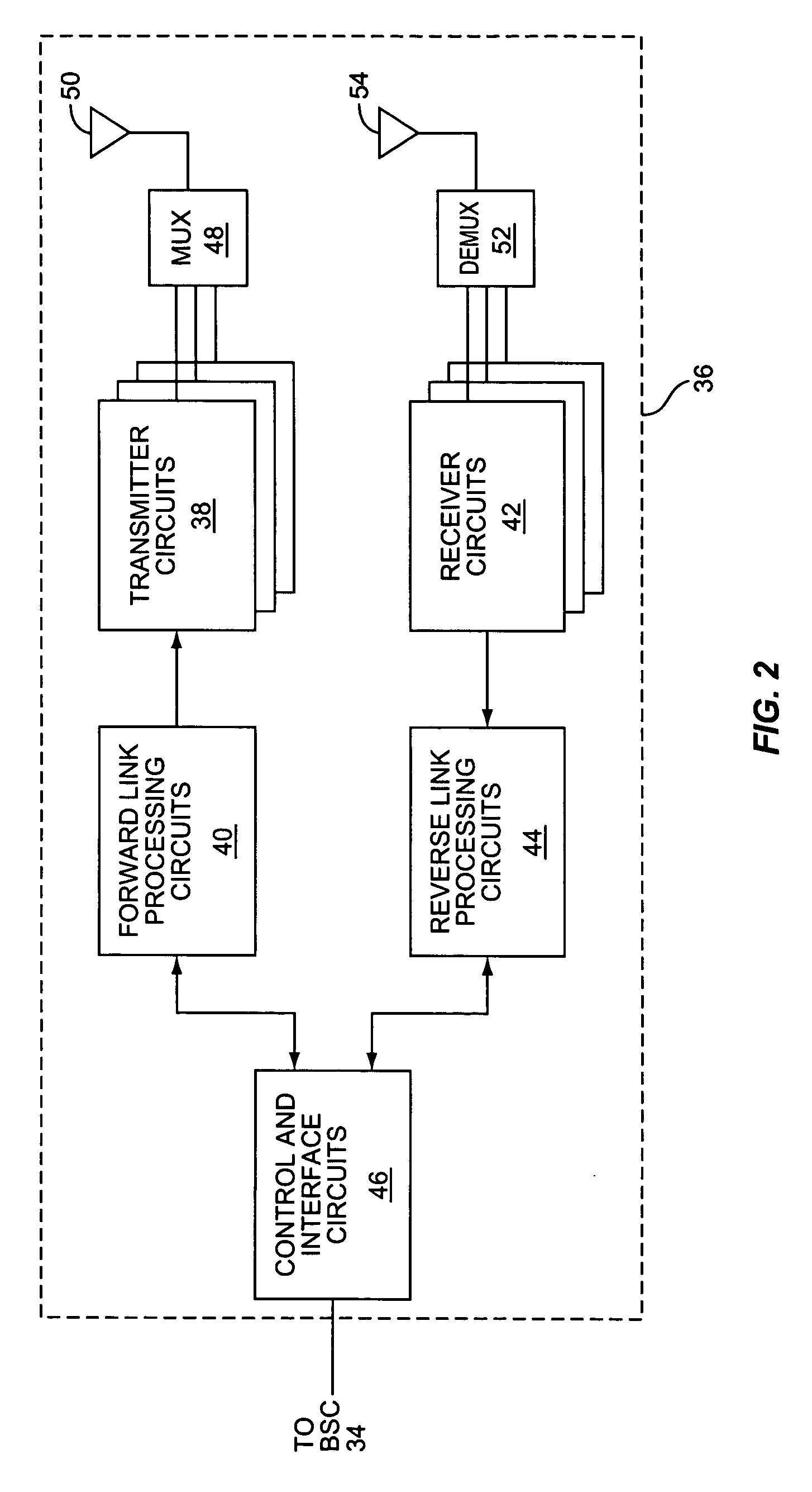Common rate control method for reverse link channels in CDMA networks
a reverse link channel and common rate control technology, applied in the field of common rate control method for reverse link channels in cdma networks, can solve the problems of significant load fluctuations at the radio base station, and outage is considered to occur, and achieve the effect of reducing the frequency of fluctuations and reducing the data transmission ra
- Summary
- Abstract
- Description
- Claims
- Application Information
AI Technical Summary
Benefits of technology
Problems solved by technology
Method used
Image
Examples
Embodiment Construction
[0015] Turning to the drawings, FIG. 1 illustrates an exemplary wireless communication network 10 in which the present invention may be implemented. Network 10 in the disclosed embodiment is Code Division Multiple Access (CDMA) network operating according to the IS-2000 standard. However, those skilled in the art will appreciate that the present invention is not limited to use in IS-2000 networks, but may be employed in CDMA networks operating according to other standards, such as the Wideband CDMA (WCDMA) standard and UMTS standard.
[0016] Network 10 includes a Packet-Switched Core Network (PSCN) 20 and a Radio Access Network (RAN) 30. The PSCN 20 includes a packet data serving node (PDSN) 22 that provides a connection to one or more Public Data Networks (PDNs) 60, such as the Internet. The RAN 30 provides the radio interface between the mobile stations 100 and the PCSN 12. An exemplary RAN 30 comprises a Packet Control Function (PCF) 32, one or more Base Station Controllers (BSC) ...
PUM
 Login to View More
Login to View More Abstract
Description
Claims
Application Information
 Login to View More
Login to View More - R&D
- Intellectual Property
- Life Sciences
- Materials
- Tech Scout
- Unparalleled Data Quality
- Higher Quality Content
- 60% Fewer Hallucinations
Browse by: Latest US Patents, China's latest patents, Technical Efficacy Thesaurus, Application Domain, Technology Topic, Popular Technical Reports.
© 2025 PatSnap. All rights reserved.Legal|Privacy policy|Modern Slavery Act Transparency Statement|Sitemap|About US| Contact US: help@patsnap.com



